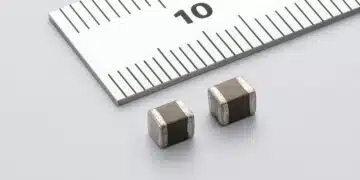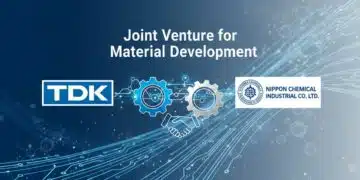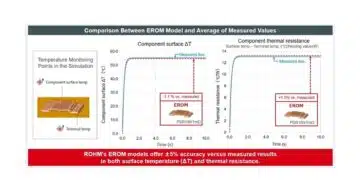TDK Corporation has announced the development of “Aim,” an original AI data analysis platform, as well as its launch for internal use in April 2023, as part of an effort to progress materials informatics (MI).
By refining its unique materials technology, TDK has accumulated data analysis technologies for material development of various products, including passive components. However, these technologies have been concentrated in individual business divisions and departments, making it difficult to be deployed throughout the company.
In recent years, MI, which utilizes AI and big data to improve the efficiency of material development, has garnered attention worldwide. TDK also started MI initiatives in 2013 and applied them to the development of magnetic and dielectric materials; the development of Aim commenced in 2018.
Aim is an original AI data analysis platform that was developed to widely deploy data analysis technologies accrued in individual departments throughout the company so that anyone can use them as well as compile high-quality data necessary for AI and big data utilization.
Since 2019, Aim has been trialed in Japan and has been used for high-speed and high-precision image analysis of materials to measure factors such as the shape and size of grains or particles in magnetic materials or dielectric materials, for example. Additionally, it has been leveraged to reduce analysis time and inspection time internally, and has undergone an expansion of functions in preparation for full-scale introduction of MI throughout TDK.
With the expansion of functions such as improved data analysis and more robust databases, as well as the development of mechanisms for MI utilization, the operation of Aim in MI began in April 2023. Initially, it will be operated by research-specific divisions in Japan, but the plan is to widely deploy it at additional locations in Japan and overseas. As TDK verifies its effects through operation and testing, more efficient MI mechanisms will be developed.
TDK will promote In-house DX related to material development through the operation of Aim and other means, and by accelerating MI promotion at TDK, the company’s original materials technology will continue to evolve to provide new valuable technologies and products.
Features
- A unique AI data analysis platform (aggregates data analysis technologies cultivated internally)
- Main applications: data analysis, particle analysis, and image analysis
- Capable of high-speed and high-precision analysis using AI
- Internal operation of Aim is intended to boost the speed and efficiency of material development
































